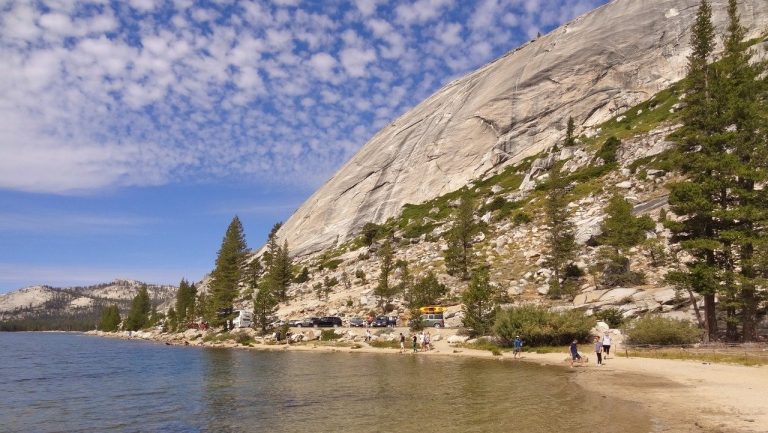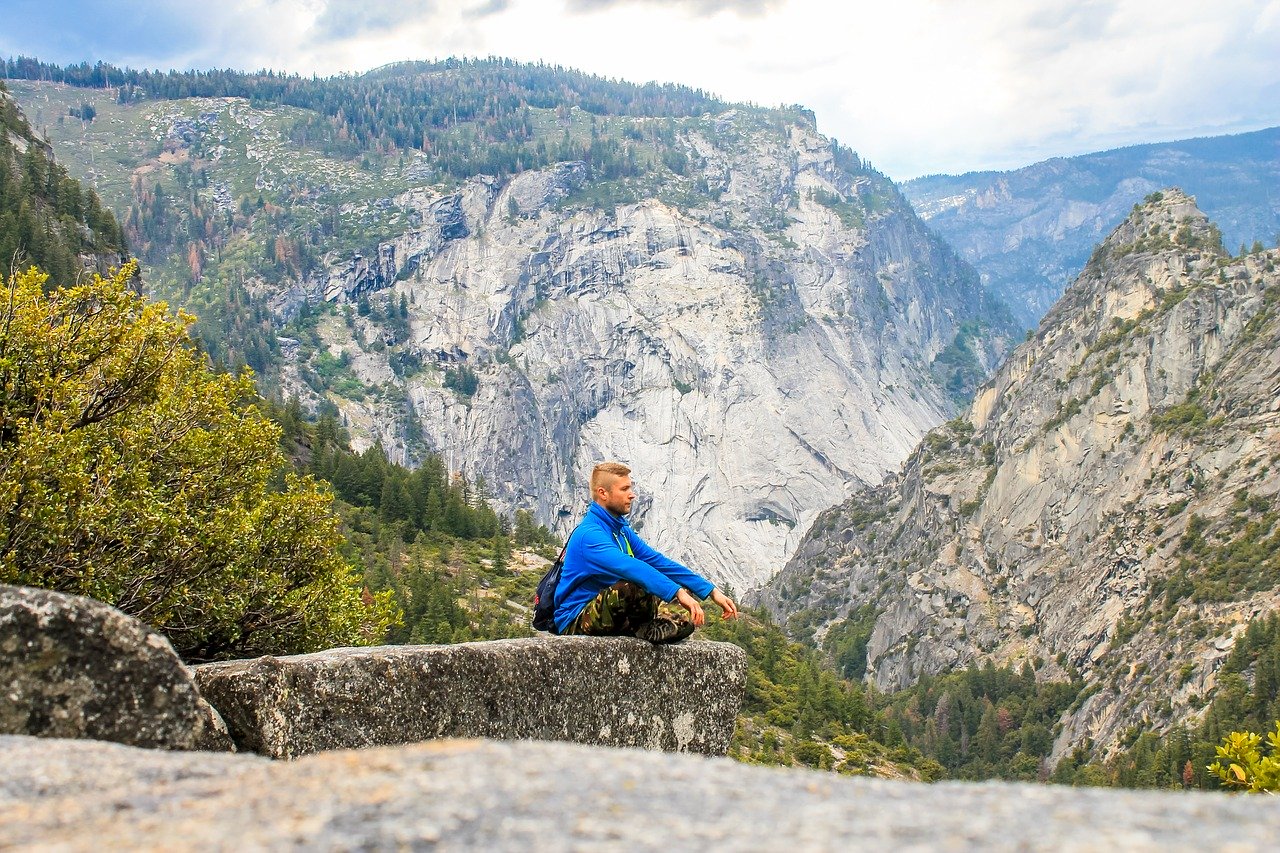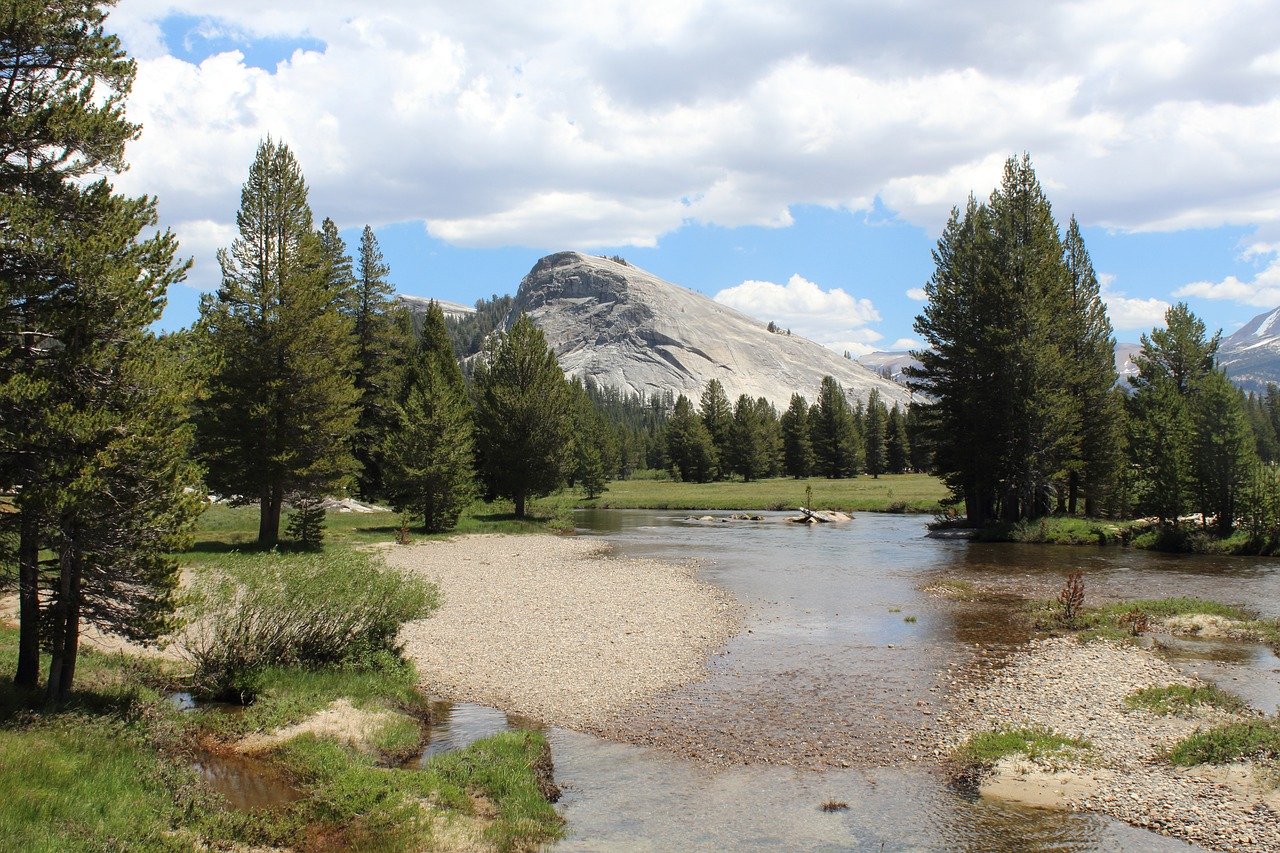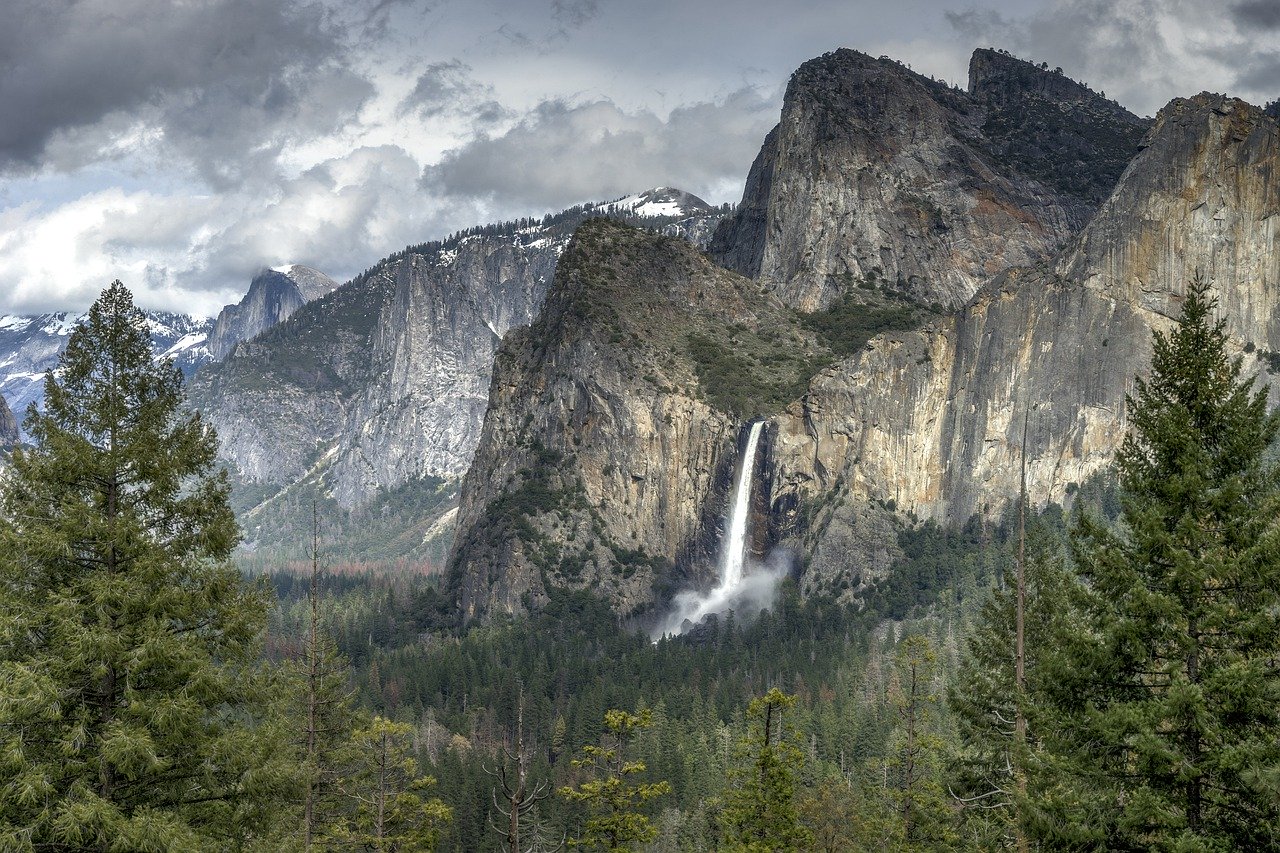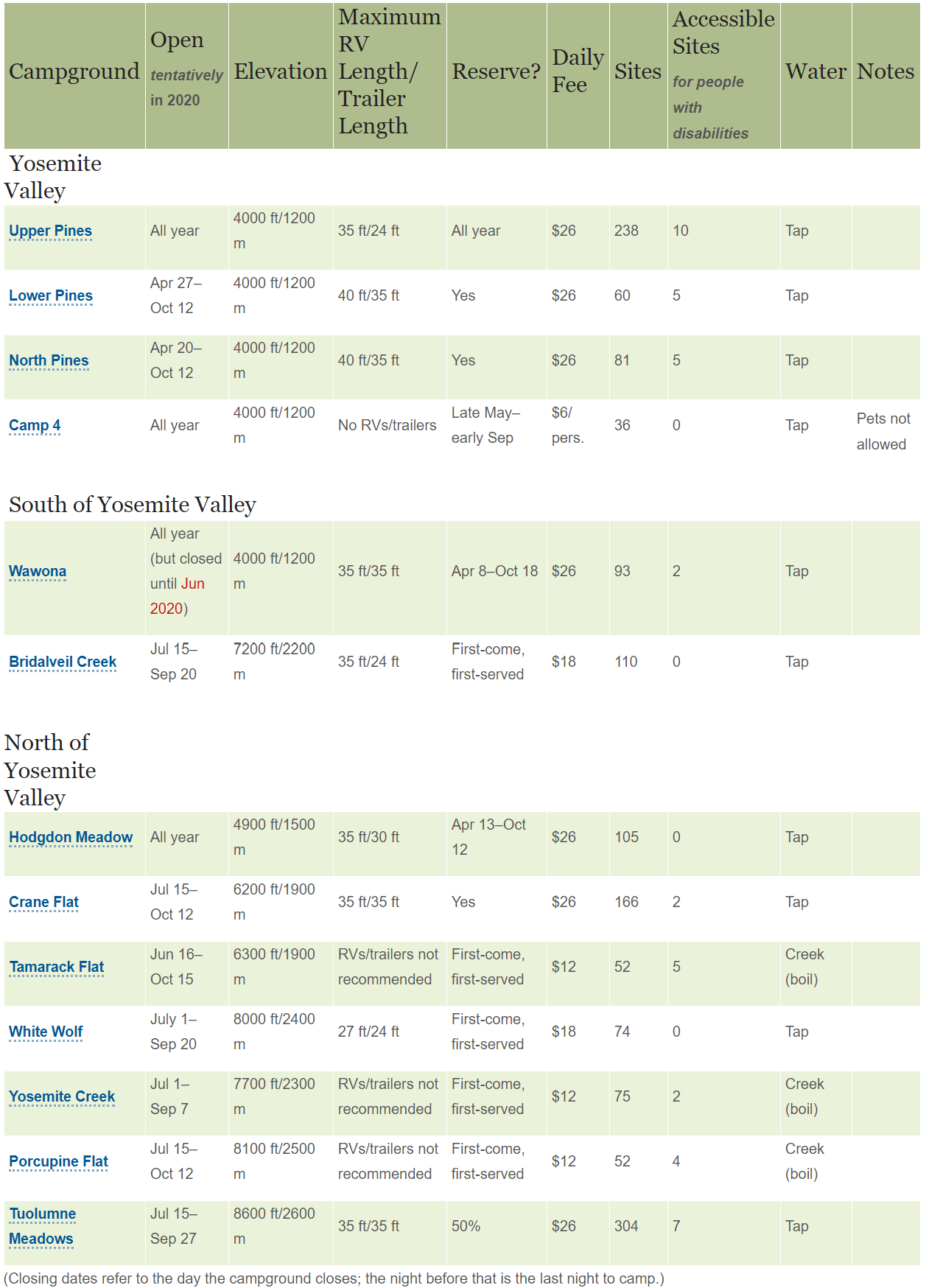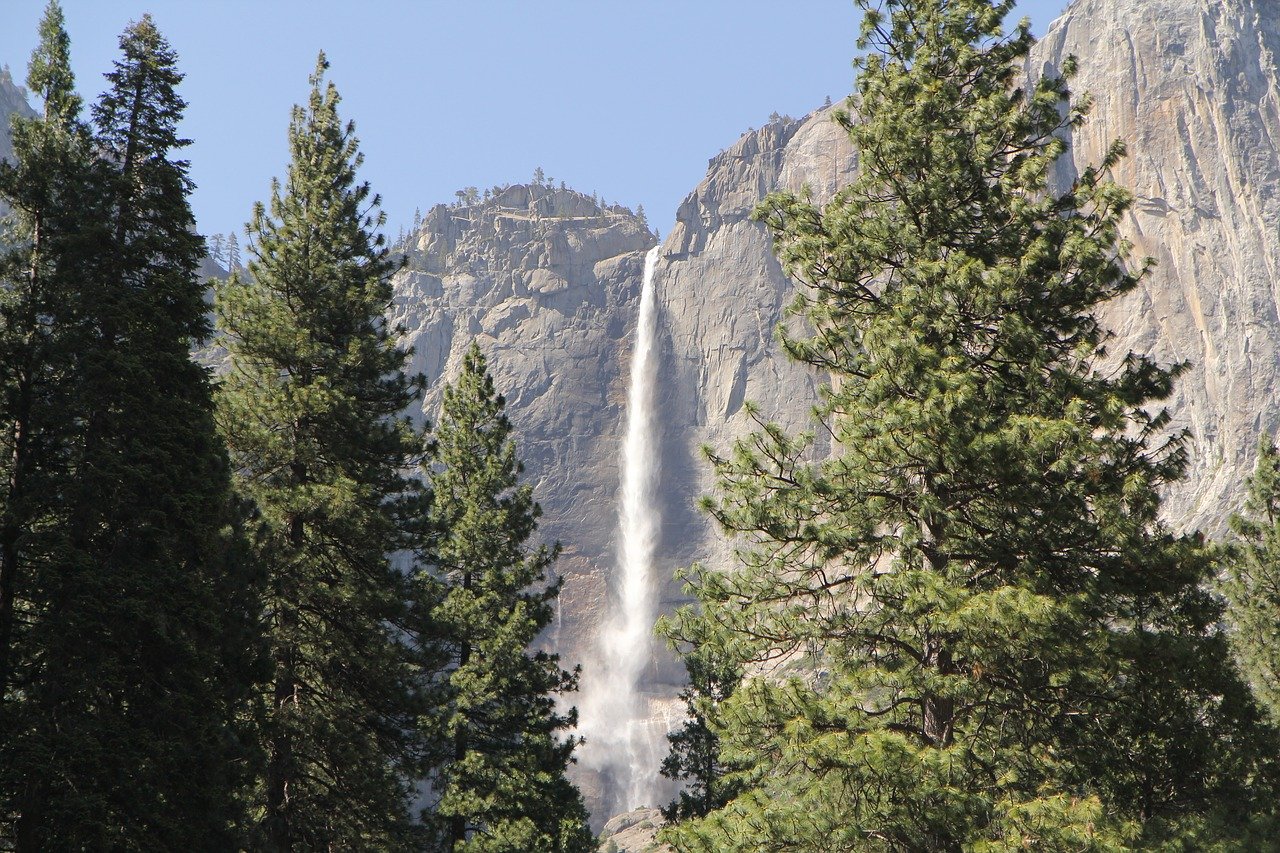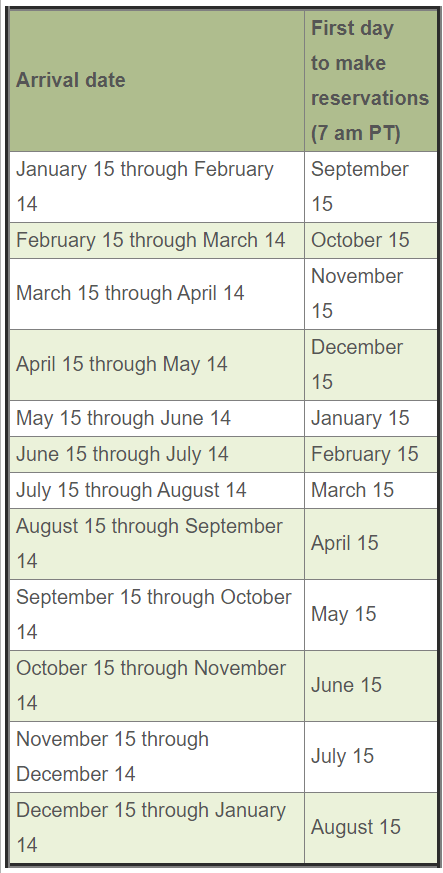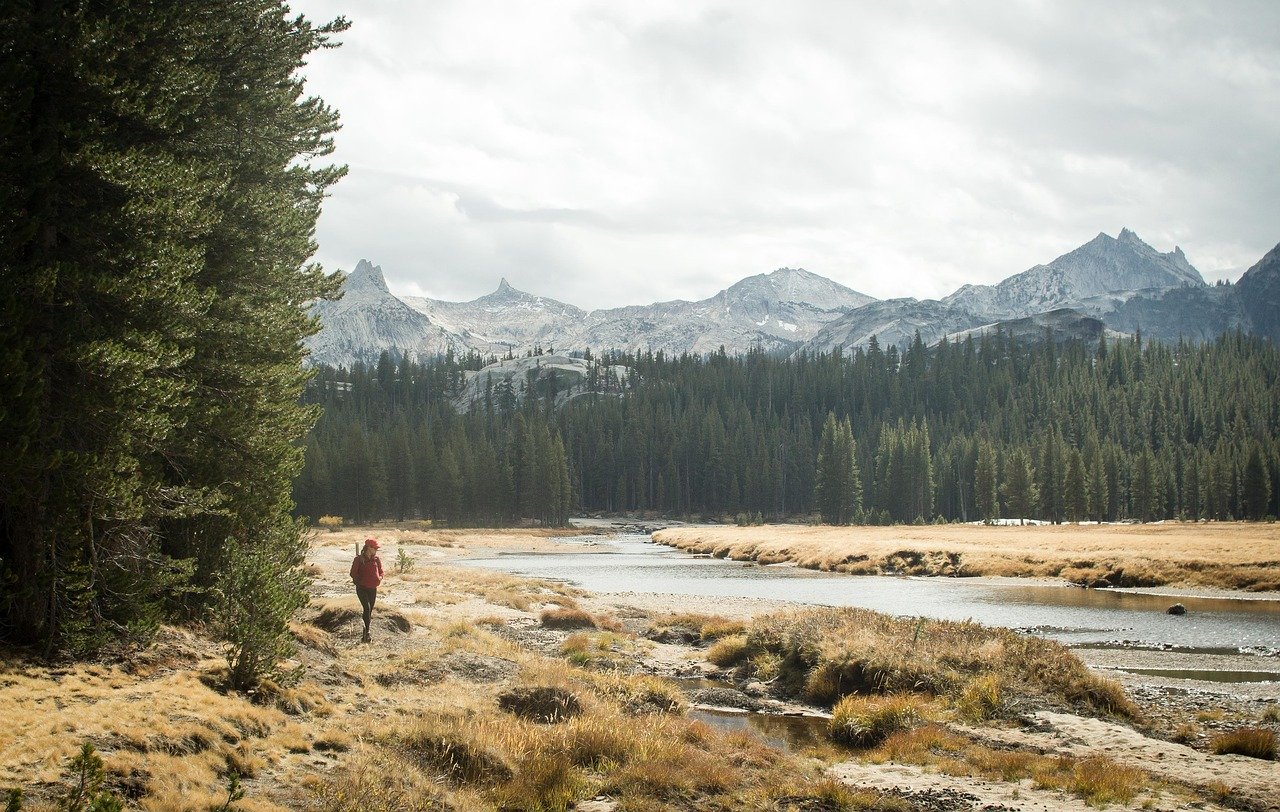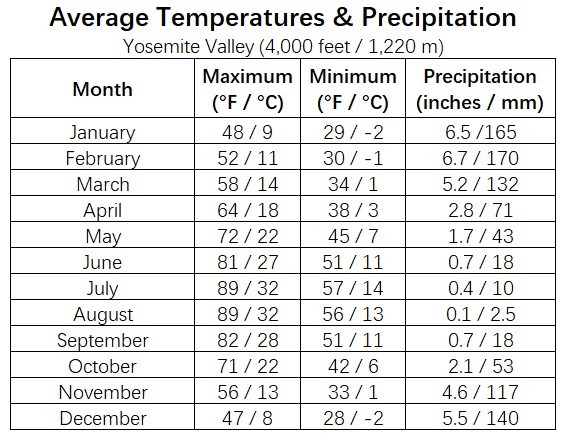One of the most unforgettable experiences that you will ever have is camping at Yosemite National Park. although it was accessible in the mid-1800s, it was not officially a national Park until nearly the 1900s. It is well over 120 years old and receives nearly 4 million visitors every subsequent year.
What is unique about Yosemite is that you can go there multiple times and always find something new. It covers a total of over 760,000 acres of land, which includes waterfalls, hiking, rock climbing, and some of the best and most well-maintained campgrounds in the entire state of California.
Here are a few tips to consider if you are thinking about venturing over to Yosemite National Park, whether this will be your initial visit or a subsequent one.
Tips for Camping at Yosemite
1. If Camping at the Campground Make Reservations Early
If you’ve never been there before, you should know that this park has 13 campgrounds that are very popular. The busiest times of the year happen to be during the months of April, all the way through September, and because it fills up very quickly, you need to get their first.
To avoid any issues with this, placing a reservation for a campsite early is the key to not dealing with this problem.
For about five months, there are specific blocks where campers can choose campsites which start on the 15th of the month and typically begin early in the morning.
If you are able to, make your reservations by phone or visit their website online which is typically the best way to do this. At exactly 7 AM, it is important to begin your quest to obtain a campsite. It is important to click the reserve now button at that time.
Wilderness Permits should be maintained, and there are specific campsites that are designed for backpackers that will remain valid.
What if there is nothing available?
There is a reservation line that you can call, specifically seven days ahead, which is (801) 559-4884. Additionally, if you ever need to cancel, you can do so seven days in advance, but that also means that spots will open up from time to time.
2. Arrive as Early as Possible
There is a substantial amount of chaos that tends to occur if you get there in the afternoon, and it is even worse if you are visiting on holidays or weekends. Once you get there, if it is early, you can set up your camp and begin to explore everything before the majority of people arrive. If you do get there extremely early, then you can count on the first-come-first-served rule that is readily apparent at your Yosemite campgrounds.
3. Avoid the Crowds!
As with any national Park, there are certain areas of Yosemite that are going to be much more crowded, but as you will notice, as you travel further away from paved areas, you will find areas of solitude. There are certain trails that are exceptional, as well as the least populated, which include:
Valley Loop Trail
This flat trail will take you around the base of the cliffs, as well as around the valley, and will extend for about 13 miles.
Pohono Trail
Once you depart Glacier Point, you can go on the Pohono Trail, specifically in the southern portion of the Yosemite Valley, and there you will find serenity and solitude. You also get to look at many interesting views including El Capitan and a Bridalveil Fall which are some of the most well-known landmarks.
Tenaya Creek Trail
This is just over 1 mile, leading to stables, and it is a completely flat trail that will take you through ponderosa pine and fragrant cedar trees that are just below Half Dome.
4. Yosemite Weather
The type of camping gear that you bring can make or break your entire trip. If you decide to go in June, for example, you can still experience freezing temperatures, yet it can also be extremely warm. Additionally, rain can be very unpredictable, and if it occurs, it will be an even greater adventure! However, proper packing will allow you to deal with unplanned weather problems.
It is so important to also pack essential items or you may regret it later. It is important to wear multiple layers of possible. It is because of these dramatic swings in the weather, regardless of the month, that many people refer to when referencing their trip. There are certain things that you do need to bring which will include:
- An air mattress, along with comfortable sleeping arrangements, can help you deal with the shift in cold and hot temperatures.
- Utensils, dishes, a cookstove, and all of the food that you will want to cook. Also, bring a lot of water.
- Even though the campsite does have functional bathrooms, toilet paper should be brought because it might not be there from time to time.
- There are lockers designed to keep the bears out which are essential if you bring a lot of food. If you are going to use some type of cooler, it has to be small enough to fit.
The weather at Yosemite can be very unpredictable. Once you are unpacked, be sure that you can get to all of your gear if it starts to rain. There are many adventurers that will use a waterproof bag so that they can have extra storage space, plus it will be impervious to precipitation. Additionally, if you use your roof rack, this gives you a lot more cargo space, on your drive to Yosemite. Once you arrive, you can remove it from your roof and allow it to dry out if it was wet.
5. Never Try to Plan to Do Everything
It is virtually impossible to see everything in the park, and this is a mistake that many people make when they are at the Yosemite campgrounds. If you are trying to rush everywhere, cramming a couple weeks of activities into a short weekend, it’s going to ruin your trip. Trying to get to every waterfall, and every attraction, is simply not possible, nor can you hike every trail during the span of a single week.
This beautiful national park is literally millions of years old, so it’s going to be there the next time you go back. You should use this time to enjoy yourself, as well as the people that are with you if you really want to have a fantastic experience when doing Yosemite camping.
Best Campgrounds at Yosemite National Park
North Pines Campground
Located along a swiftly flowing river, tall pines, and walls of granite, North Pines Campground has everything you could want. It’s a beautiful woodsy environment that’s in an ideal location. Close to Half Dome Village, this campground is at the edge of Yosemite Valley. There are a number of hiking trails that are within walking distance. There are just 81 sites, and the majority of those sites are spacious and pleasant.
It’s a quiet campsite that can give you privacy if you’re looking for it. If you’re interested in scenic views, riverside sites are a great option. The campground opens up in April and shuts down near the start of November. You’ll find that trailers up to 35 feet, rents, and RVs up to 45 feet are allowed here. You can reserve sites in advance.
Upper Pines Campground
Upper Pines Campground has 238 campsites in total, which makes it the biggest of Yosemite Valley’s three campgrounds. It’s split into several individual loops, which means it feels smaller than it actually is. It’s also easy to navigate your way across the campground. Since there are plenty of trees like pines and cedars throughout the campsite, it’s easy to get either shade or sun when you need it. You’ll also find beautiful views of the valley walls.
For the most part, sites are fairly open, which means they aren’t all that private. You’ll be in close walking distance of many trails. You’ll find that the sites are smaller than the ones located at North Pines Campground. The length of equipment is restricted to 24 feet for a trailer and 35 feet for an RV. You can reserve sites ahead of time. The campground is open all year round.
Lower Pines Campground
This is the smallest campground in the area around Half Dome Village. Both deciduous trees and pines are located here. You’ll find that this is an appealing campground with many beautiful views. Along the edges, you’ll find campsites that are surrounded by trees, which provide a greater degree of privacy. The sites located at the center of the campgrounds are a lot more open. The river is adjacent to one side of the campground.
During the spring, some sites will be closed because of flooding. Because of this, you’ll want to be careful about reserving campground sites during the months of May or June, when the water tends to be at its highest. Your reservation could be canceled, which means you’ll have to search for a last-minute solution.
There are 60 sites at the campground in total. It is open from late March to early November. Trailers up to 35 feet and RVs up to 40 feet are permitted. You can reserve a site in advance.
Camp 4
This campground has a positive reputation with rock climbers. Back in the 60s and 70s, many well-known campers chose to stay here over the course of the climbing season. Many famous climbers like Warren Harding and Royal Robbins have stayed here. Because this campground plays such a significant role in rock climbing history, the campground appears on the National Register of Historic Places.
To this day, campers flock here. The pine-covered campground is a short distance from Yosemite Falls. It has an unusual atmosphere that won’t appeal to all campers. There are just 35 tent sites, all of which are walk-in only. Sites are shared among the six people that are assigned to a campsite. Campers register individually and camp alongside the other people that are assigned to that site. If you come in a group, be aware that you could be split up. Pets aren’t permitted.
Half Dome Village
While it will cost you more than it would to simply rent a campsite and bring equipment of your own, it’s possible to rent both cabins and canvas tent cabins at Half Dome Village. Although the tents are fairly close together, they’re in great shape. The tent cabins have hardwood floors, cot-like beds, a propane heater, and lighting. Tents contain all the blankets and linens you need. You can find showers and washrooms by walking a short distance.
The wood cabins are fairly similar and don’t have running water. You’ll have to share washrooms and showers with the tent campers that are staying nearby. You’ll receive housekeeping service every day. If you’d like to book a tent or cabin, you can do so via the National Park Reservations Service.
Wawona Campground
Close to Highway 41’s south entrance, Wawona is approximately an hour from Yosemite Valley. If you hit traffic, it may take you even longer to get there. With that said, if you’re unable to reserve a campsite in the valley, you may find that this is the next best option. This campground is located near the South Fork Merced River. You’ll find sites located amidst the pine trees. It’s high up, with an elevation of approximately 4,000 feet. Near the campground entrance, you’ll find Loop A, which is on the open side.
If you’d prefer a more appealing setting and more private campsites, Loops B and C are the better choice. Campsites at Loop A are available year-round, while Loops B and C are only open spring through fall. You’ll need to reserve a campsite between April and September. October through April, sites are first-come, first-serve. There are 93 sites in total, and trailers up to 35 feet, RVs, and tents are all allowed.
You’ll find a number of attractions in the general area, such as Pioneer Yosemite History Center and Mariposa Grove, which is home to many giant sequoia.
Summerdale Campground
Summerdale Campground, which is privately operated, is approximately 1.5 miles from the south entrance to the Highway 41 park. There are many trees around the campsites, including sugar pines, cottonwoods, and cedars. On one of the campground’s sides, you can find a river. There are 30 sites at the campground. Water and vault toilets are available. You’ll find a fire ring and a picnic table at every site. Pets are permitted.
Indian Flat RV Park
Near Merced, along Highway 140, you’ll find Indian Flat RV Park. This park is privately run and could be a good choice if you’re looking for a campground that offers more amenities or if a campsite within the park isn’t available. There are both RV sites and tent sites available here. Some sites offer full hookups. Close by, at a lodge, there is an outdoor pool that is available to guests. Thanks to the numerous trees in the area, the campground has a rustic environment and plenty of shade.
Hodgdon Meadow Campground
This campground is slightly less than an hour west of Yosemite Valley. Although it’s not on Highway 120, it’s still in the park’s limits. The primary reason people are drawn to this campground is that it is accessible throughout the year and because it is a convenient place to stay. Sadly, this area has suffered because of the lengthy drought in California. Because of this, a number of trees have had to be removed.
This means most sites don’t offer as much shade and privacy as they used to. The sites are on the smaller side and are uneven. Because the ground below consists of fine dirt, you can expect a lot of dust when you’re camping here. The worst spots to stay at are the spots close to the entrance. This area has been heavily impacted by fires.
You can make reservations from the middle of April to the middle of October. It’s possible to book a site as much as five months ahead of time. During other times of the year, the campsite operates on a first-come, first-serve basis.
Tuolumne Meadows Campground
Do you plan on visiting the campground during the summer season? If so, you may want to take the time to do some hiking and explore the area near Tioga Road. This campground is in an excellent location for this. Because the campground has an elevation of 8,600 feet, the weather can be cool at night even in the summer season. During the winter, Tioga Road is closed up.
Most years, it isn’t open until July, and it closes during September. It is able to accommodate trailers up to 35 feet, tents, and RVs. There are 304 sites in total. Some can be reserved, while others operate on a first-come, first-serve basis. Although there are potable water and flush toilets at the campground, you won’t find any hookups here.
Seasonal Activities in Yosemite National Park
Spring
Geocaching
It’s one of the most popular things to do in Yosemite Park during the spring season. Geocoaching is an outdoor treasure hunting game. Here, you can find caches using the GPS feature on your smartphone. The cache can be found in a waterproof container (like Tupperware or coffee can) and contains a pencil, notebook and a token (trinket) inside.
Use Geocoaching websites to get the GPS co-ordinates once you find the cache. Sign your name and the current date in the book then take the trinket (token). However, you must leave one of your own in the exact so other people can find it.
Yosemite Valley
It makes up less than 2% of the whole park. However, most of the visitors (at least 4 million per year) always find themselves in Yosemite Valley. You should visit the area in late spring when the weather is warming up and the area isn’t too crowded.
It’s also the best time to see Yosemite Falls, the highest water fall in North America. At this time, the water is at the highest level. Sentinel Falls and Snow Creek Falls are almost as high as Yosemite Falls. Here, most people go through the Tunnel view from the west.
You will find wildlife like mule, squirrels, bears and deer. The sky is full of different types of birds including Steller’s jay, one of the rare species. The valley flow is full of pine trees that form a thick carpet. The nearby peaks provide amazing rock-climbing opportunities.
If you love hiking, you will also find amazing hiking trails like the Mist Trail, Yosemite Falls Trail and the Four Mile Trail. The valley is the most protected area in Yosemite Park. It’s the best scenic place to visit during the spring season.
Half Dome
It is made out of solid granite and the most distinctive peak in Yosemite Valley. Three sides of the half dome are round and smooth while the remaining part is a sheer cliff. That’s where the name Half Dome comes from.
The mountain was often referred to as perfectly inaccessible but can be accessed by professional and amateur hikers. From the top, you should be able to see the cook’s meadow, one of the most popular outlooks. There is a hiking trail leading to the top.
However, you should be able to go up the stair steps made out of granite and cling to the steel cables tightly. At least 1,000 people use the hiking trail every weekend. Most of them break up the trail by camping somewhere overnight. You will also find a lot of rock-climbing routes to the top which is wide and flat. Once they get to the top, they can enjoy the view.
Tioga Pass
It is the highest mountain pass in California. Tioga pass is the best choice for an outdoor adventure in the late spring. It ascends very gradually from the east and drops steeply in the west just like other Sierra Nevada Mountain passes.
Snowfall is always heavy but often varies with each year. Sometimes rangers close the pass from mid-October all through early July. You can visit it from May to October and take a day trip to Bishop and Mammoth Falls.
Glacier Point
It is not the highest point in Yosemite Park. However, Glacier Point is strategically positioned to offer the best views of the landmarks of the park. The area near the summit is very rocky but the slopes are made out of glacial material.
If you take the trip with a park ranger, they are ready to explain the significance of the glacial material. To reach Glacier Point, you can take a tour bus or take the Four Mile Trail. During winter, late spring and late fall, you can do a lot of activities such as snowshoeing. However, it’s closed from December through May.
Yosemite Falls
It is the highest waterfall in America. You are discouraged from going over the falls in a barrel unlike other smaller waterfalls. During the late spring season, the water levels peak because of the snow melting patterns.
Yosemite Falls is a tiered waterfall with 3 distinct areas. First, there is a hiking trail leading to the Upper Yosemite Falls. The view is very cool and the noise is too loud so you need to be well-prepared. There are also the Middle Cascades that are hidden gems that most people often miss.
You can find a hiking trail to the area but it’s not a good idea because it is very slippery and dangerous. Finally, there is Lower Yosemite Falls which is the most popular area. It’s easily accessible from a one mile loop. The rangers are ready to share stories of the Poloti witches at any time.
You can also view these amazing falls from a distance from the Yosemite Valley Lodge or the Yosemite Village. Take in the scenic view from these amazing spots.
Summer
Whitewater Rafting
Yosemite National Park has so many areas where you can enjoy whitewater rafting activities. The top choice is the Merced River. As an experienced rafter, you can do it on your own but it’s prudent to hire a guide or outfitter to help navigate the rapids.
You should do this in early summer since it’s at the peak snowmelt (Class IV). As the snow melts, the river drops and the rapids go back to class I and II.
El Capitan
It is yet another popular spot in Yosemite Park. Compared to Half Dome, the granite peak is very rocky and craggy. El Capitan is found in the northern part of the Yosemite Valley and it’s reserved for summer tourists only. Use the tunnel view to get the best scenes for this amazing peal.
There is a hiking trail going through the Yosemite Valley, Yosemite Falls and ends in the summit of El Capitan. Rock climbers love the summit. The approaches are referred to as Iron Hawk, Sea of Dreams and many more and are quite strenuous.
Most climbers take a 4 day excursion to reach the top of the summit. However, some speed-climbers have ascended El Capitan very fast. For instance, Alex Honnold, a free climber, ascended the mountain in 2017 within four hours.
Bridalveil Falls
It is the first waterfall you will come across when you go to Yosemite Park. It is very unique, thanks to the rock formations surrounding it. The angle of trajectory of the water is also very notable. During windy days, the water is blown sideways creating a great breeze for all the tourists.
The Bridalveil Falls goes as deep as 620 feet into the ground. You can enjoy trail for about half a mile and the roadside parking which is quite ample. Getting to the waterfall is about half a mile with so many sites to see.
Tunnel View
Since Yosemite Park was opened in 1933, visitors enjoy the tunnel view because of the scenic sites. It is part of the state highway 41 and the first thing to enjoy in the huge park. As you get in from the south, you will notice El Capitan to the left while Half Dome is in the middle. Finally, Bridalveil Falls is on the right.
People love to come to this amazing park and there is always a huge turn-out, especially in summer. If you are visiting the area with an RV, you can find ample parking. The tunnel view had a facelift in 2008 with improvements such as wider sidewalks, improved viewing vantages, safety rails and much more. You can walk to the Inspiration Point and get the best view of Yosemite Valley.
Vernal Falls
It is the most visible waterfall in the park and can be seen all year round. However, by summer, there are fewer tourists compared to other falls in the park. It’s breath-taking and unforgettable for everyone. You can access the water fall through many ways including the John Muir Trail or the Mist Trail.
You can get the best views before the mile point on the Vernal Fall Footbridge. When the water levels reduce, you can walk across the rocks but it’s quite dangerous because the rocks are too slippery.
Tuolumne Meadows
If you want a completely different experience, you should make a stop at Tuolumne Meadows. You don’t have to bask in all the mountains and trees when you visit Yosemite. Here, there will be a lot of moisture and in some seasons of the year, the meadows look like a lake.
They also have some groundwater below the surface so there is quite a vegetation. You can visit in the late summer season to see the wildflowers blooming. Don’t forget to view the unique porphyritic granite rock formations as you hike.
Fall
Biking
Be sure to bring your bicycles alongside all your other essentials before visiting Yosemite National Park because you will be greeted by more than 12 miles of cycling trails. Biking on the roads is also allowed. A great path to cycle through during autumn is the Lower Yosemite Fall Trail by Yosemite Village so you may enjoy the colorful leaves.
Paths by the swinging bridge will lead around Yosemite Lodge and going through the park will bring you to Mirror Lake and the Royal Arches. If you do not own a bicycle, there is no need to worry as you may rent one in Yosemite Valley.
Majestic Yosemite Hotel
The Majestic Yosemite Hotel is full of character and history with various presidents and royalties staying here over the past years. Visitors can also expect a lot for this hotel.
During the fall season when other park areas close despite the weather not being too cold, many guests enjoy the guided tours that leave from the hotel which are frequently offered.
Getting lost or stranded is not a trouble and smaller crowds allow for better enjoyment of the many wonders of the park.
It is worth spending more on a hotel suite – you won’t regret it. The hotel also features a heated swimming pool and an enjoyable full-service dining area.
Nevada Falls
The Nevada Falls has an unusual shape, and the bottom very much resembles a whitewater area. Furthermore, it is one of the few areas of the park with no restrictions on swimming. You must be advised that the water is extremely cold during the fall season though.
The water from the peak drops down 594 feet and feeds into the Merced River at the west of the Little Yosemite Valley, where you can enjoy swimming and watching wildlife. You can also take a three-mile hike to the top along the Mist Trail.
Mist Trail
This trail is arduous and short, making it one of the most popular hikes in the park. Mist Trail follows the Merced River, begins around the Happy Isles, and ends around Nevada Falls, through Yosemite Valley. This section of the Merced River is a whitewater rapid with house-sized boulders that poke out into the water, causing the rapids to be even faster. The John Muir Trail segments from the Mist Trail. This area also features numerous backcountry camping opportunities.
Mariposa Grove
This large group of towering Sequoia trees opened once again around summer in 2018 after undergoing a three-year restoration period. Mariposa Grove is found by Yosemite’s south entrance, so just like Tunnel View in the northern area, this grove is the first thing that people will see.
Some notable trees include a Grizzly Giant that’s lived for 2,000 years, a 36,000 cubic foot Washinton Tree, and the almost fire-resistant Telescope tree. The Mariposa Grove Museum helps visitors enjoy these beautiful and calming trees and is listed as a National Historic Place.
Between March and November, you may take free shuttles to the Mariposa Grove from the Welcome Plaza.
Mirror Lake
It is unbelievable that this lake once took up the space of the entire Yosemite Valley. Nowadays, only a portion remains and may be gone in several hundred years because of the build-up of sediment. It takes 30 minutes to hike through the woods to get to the Mirror Lake.
There is a beautiful grist mill found on the shore and fishing is enjoyable here. I
t can be seen why it was named Mirror Lake as it reflects its surrounding mountains just like a glass table.
Winter
Visiting Museums
If you want to keep yourself from the coldness, it is a great idea to go on a tour of some museums found in the national park. The Yosemite Visitor Center is open all year round and has an orientation movie and jaw-dropping exhibits showing the story of the stunning landscape.
Additionally, you would definitely want to see the Indian Cultural Exhibit and the other galleries that you can find at the Yosemite Museum.
John Muir Trail
The John Muir Trail is one of the most famous ones in the National Park and is about 210 miles long. Most of the trail traverses through protected wilderness areas and the last section of the trail soars at 10,000 feet at its peak.
About a thousand people try to hike the entire trail every year and fortunately, many starting and ending points are set. Especially when the ground is covered in snow, the Ansel Adams Wilderness/Devils Postpile portion is highly recommended.
Badger Pass/Yosemite Ski & Snowboard Area
Not including this site in a list of activities in Yosemite National park during winter is just unacceptable. This skiing area features 10 runs and 5 lifts.
Winter sports did not get much attention in the area until the 1932 Winter Olympics, with Los Angeles hosting the Summer Games in the same year. People enjoy not only skiing but also snowboarding, snowshoeing, cross-country skiing, and tubing.
Visitors may also take skiing lessons and take a backcountry ski tour. You may also head to the Curry Village Ice Skating Rink for ice skating.
Olmsted Point
Olmsted Point is accessible as long as Tioga Pass is usable. The point features a great view of the area in Yosemite Valley, and even more when the ground is covered in snow.
People can enjoy amazing views of Half Dome, Tenaya Lake, and Clouds Rest. Those who are brave enough may hike towards the point for even more jaw-dropping views of the scenery.
Sunrise or sunset watching is highly recommended due to the colorful pink hues in the sky naturally complements the pink granite from this point of view.
Yosemite Museum
Ansel Franklin Hall, a preservationist, began the Yosemite Museum in the year 1925 and was architecturally designed by Herbert Maier.
The revolutionary National Park Museum was the first of its kind and served as a model for all the succeeding facilities throughout the entire National Park system. The rustic design complements the scenery around it.
Various rotating exhibits about the people and places in the park from the Yosemite Renaissance 32 Art Exhibit and includes paintings of the landscape from the 19th and 20th centuries.
Happy Isles
The section of Yosemite Valley in the far east includes these Merced River islands. Visitors camp in the Happy Isles even during the winter season but make sure you bundle up and prepare for the cold weather if you decide to do the same.
Many find the sound of water rushing very soothing. Even at freezing temperatures during winter, the water magically flows freely.
How to Make Yosemite Camping Reservations
People love to camp in Yosemite National Park for so many reasons. The area is filled with rivers, pine trees, granite towers, and more. There are over 2 million visitors to the area that come every summer.
There are some areas that are favorites for campers and they return over and over again. The three Pines campgrounds are the most sought after spots for campers. They are the Upper Pines, Lower Pines, and North Pines. Being close to all of the fun and interesting places is why so many people want to camp at these locations.
Making a reservation is what campers need to do and this information will help them to do so:
What are the Campgrounds that are Available?
The park has 13 campgrounds in the Yosemite Valley, north of the valley, and some on the south of the valley. Four of the campgrounds are open year-round and they are the Upper Pines Wawona, Camp 4, and Hodgdon Meadow. There are other ones that are open at certain times of the year from March through October.
What are the Benefits of Staying in the Yosemite Valley?
Staying in Yosemite Valley is filled with a lot of fun because it is close to the park’s amenities. For transportation, there is a shuttle that will take you to the places you wish to see. There are trails to Yosemite Falls, Half Dome, and other areas for your enjoyment. The campground is surrounded by beautiful, granite cliffs.
What are the Benefits of Staying Outside of the Valley?
If you want to stay in these areas, you won’t have a problem getting a reservation. Fewer people stay in these areas and it is much quieter than in the valley. There is a lot of great scenery in the area with many trails for hiking. These campground spots are also for people that love the solitude of the wilderness.
Is It Hard to Reserve a Spot?
At certain times of the year, over 2 million people will visit the area. From June through September, spots will be difficult to reserve. In Yosemite Valley, there are 414 campsites and there are so many people that want to reserve them. The process for reserving a spot is completed online so it is a must to be fast when making your reservations. You want to beat the other people to the goal so that you are able to get the spot that you want.
How Do You Reserve A Spot?
Travel Dates
When you are planning your visit, you will want to arrive on a Sunday and leave on a Friday. Visiting during an off time of the year is also important. When the reservation window opens, you want to know an action plan so that you are able to secure a spot for your trip.
Day Reservation Window Opens
Reservations open on the 15th of the month. You can make it 5 months before your trip.
Recruit Helpers
Get the help of two people that you know to make the reservations. You can each choose a different spot to see who is able to get one. This ups your chances of getting a spot for your visit to the area. Since there is a holding area for reservations, you will be able to dump off the extra reservations without being penalized. In fact, you will not even be charged for them in the first place.
Sign Up at Recreation.gov
You need to set up an account when you go to this site. Fill out all of the information so that you are sure that you will be able to access the account easily. Have a solid password that you will always remember.
What Do You Do If You Can’t Reserve a Spot?
El Portal
Close to the Yosemite Valley, along Highway 140 is El Portal. This is only 30 minutes from the best attractions of Yosemite Valley. It is a small area and one of the best places to stay at is Yosemite Cedar Lodge. It has full kitchens in the spacious suites.
Oakhurst
The Yosemite Southgate Hotel & Suites and the Best Western Plus Yosemite Gateway Inn are on Highway 41. They are located one and a half hours from Yosemite Valley. They offer fantastic accommodations just in case you are not able to secure a spot.
Highway 120 and Groveland
Another great place to stay in is the Rush Creek Lodge in Yosemite. Suites with balconies, a pool, and restaurant are all a part of this great stay. If you want something a little bit less expensive, you can go to the Groveland Hotel in Groveland.
Dispersed Camping
You may also want to consider camping in your car. You are allowed to do this in any National Forest Land that is located in the United States. By checking out state map and a road atlas, you will be able to tell the difference of which parts of the land that you can camp on. Here are some other tips:
No Fires
You will not be able to make a fire without a permit. You can get a permit from the National Forest Ranger Station and they are free for you to acquire.
No Ground Tents
Ground tents are prohibited. You want to sleep in your vehicle when you want to camp in this manner.
Spacing
You want to be sure that you are following all of the rules and regulations that are posted. One of them is to only camp at least 200 meters off of the main highway. You will find that there are many places that you will be able to choose from.
Respect
If a spot says private property, you should not camp there. You should also make sure that you dispose of all of your trash and leave the area as it was when you first arrived there.
What Is The Weather Like In The Yosemite Valley?
Yosemite National Park is large and it covers 1,200 square miles. It is located in Sierra, Nevada. Just to give you an idea of what you are dealing with is that the elevations range from 2,000 feet to 13,000 feet. It gets most of its precipitation from October to May and 75% occurs between November and March. From November through May, there is snow throughout the Yosemite area. During any storm in the winter, there can be rain or snow or both. This should help you to know what types of clothing you will need to pack for your trip. You always want to be able to stay as warm as possible whenever you are traveling.
What to Pack for a Yosemite National Park Camping Trip
Rope
Tent skates
Tarps
Easy up
Poles
Sleeping bag
Pump for an air mattress
Cots
Blankets
Sheets
Pillows
Sleeping pad/self-inflating mattress
Stove
Trash bags
Lighter/matches
Spatula
Firewood
Oven mitt
Fuel for stove
Charcoal
Dutch oven
Tongs
Plates/bowls
Can opener
Aluminum foil
Paper towels
Pots/pans/cookware
Silverware/plasticware
Dirty dish bucket
Spices
Dishwashing soap
Cutting board
Cups
Scrubbie
Knives
Folding table
Olive oil/cooking oil
Tablecloth
Ziplock bags
Coolers (1 for food, 1 for Beverages)
Coffee pot/percolator
Tupperware
Camp kitchen
Coffee cups
Shaving cream
Razor
Toothbrush
Washcloth
Shampoo
Toothpaste
Medication
Deodorant
Brush
Additional lenses
External hard drive
Flash equipment
DC/AC converter to charge batteries
Additional memory
Video camera
Cameras
Tripod
Computer
Remote camera trigger
Filters
Lens cleaning kit
Lantern
Extra mantles
Gas for lantern
Firestarter
Family radios
Flashlights
Maps
GPS
Whistle
Candles
Lantern Hanger
Extra batteries
Baby wipes
Pen
Paper
Compass
Hammock
Cards/dominoes/games
Gloves
Bungee cords
Pocket knife
Binoculars
Bikes/scooter/rollerblades
Umbrella
Frisbee
Cellphone
Canteen/water bottle/Camelback
Toys for kids
Horseshoes/cornhole
Small shovel
Toolkit
Money/wallet
Newspaper (for firestarter)
Trail guides/hiking guides
Bug repellant
Watch
Sunglasses
Camp chairs
Reading material
Tape
Ax
Tent light
Jiffy Pop
Hershey bars/Graham crackers/chocolate bars
AC converter extension cord
Trail mix/snacks
Hiking poles
Glow sticks
Tent repair kit
Shirts
Hiking boots/shoes
Swimsuit
Belt
Hats
Sweatshirts
Windbreaker
Jacket
Shorts
Socks
Underwear
Rain gear
Sleepwear
Gloves
Water shoes/flipflops/Tevas
- 15 Best Free Online Virtual Summer Camps for Kids (2022) - July 6, 2021
- Expert Roundup: Advice to Mitigate the Effects of Coronavirus - March 22, 2021
- Best Gifts for Travelers - January 15, 2021
